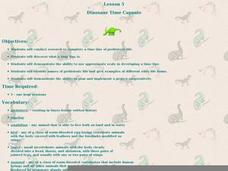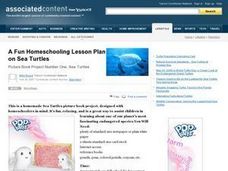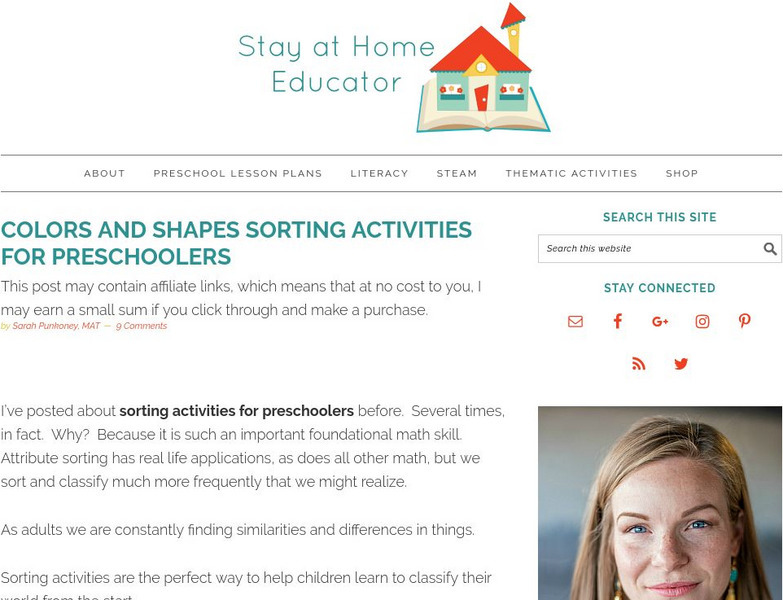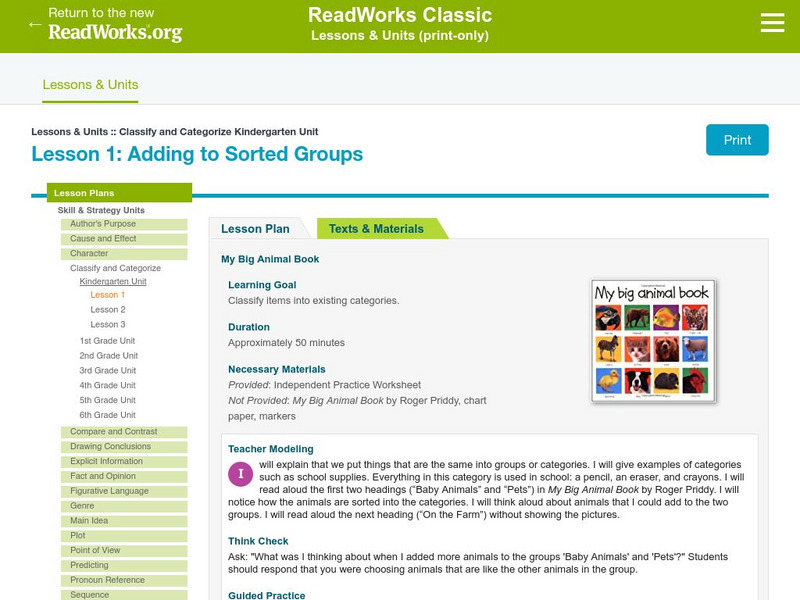Curated OER
Egyptian Civilization
Fifth graders explore facets of ancient Egyptian life. In this lesson on ancient civilizations, 5th graders find the location of ancient Egyptian nations on a world map and describe the climate and features. They explain how post...
Curated OER
Trekking to Timbuktu: Timbuktu: A Center of Trade - Teacher Version
Fourth graders discuss the origins of Timbuktu, explain the importance of its location, and describe the kingdom of Mali. They also explain how and why Timbuktu became a part of Mali.
Curated OER
It Figures!
Students judge, compare and construct two-dimensional figures using a variety of materials.
Curated OER
Neat Feet
Pupils view a video and discuss different kinds of feet found in the animal kingdom. They make prints using paint, rubber stamps and their own feet and then measure and compare the tracks.
Curated OER
Dinosaur Time Capsule
Third graders research prehistoric life using educational software. They design a prehistoric life while showing the use of appropriate scale and names for the prehistoric life. They follow an internet link to participate in a virtual...
Curated OER
Trekking to Timbuktu: The Search for Timbuktu
Students explore the factors that contributed to the decline of Timbuktu and the myths and misconceptions about the city. Students study the obstacles that made a journey to Timbuktu a difficult one as well as discover the first European...
Curated OER
CSI Clamshell Investigation
Pupils explore and explain how moon snails eat and where the holes in clamshells come from and then draw conclusion from the data collected. They incorporate math and graphing skills to determine if there is a relationship to a clam's...
Curated OER
Pollination Partners
In this science worksheet, students look for the causes and effects of pollination through doing some arts and crafts projects that includes a collage.
Alabama Learning Exchange
Three in a Row Calendar Game
Students explore a calendar. In this calendar and math instructional activity, students view a video clip about using a calendar. Students participate in a game in which a game board is used to identify days of the week, dates, and months.
Curated OER
Wind
Students build an anemometer and measure wind speed. In this wind speed lesson, students build an anemometer using the student instruction sheet. Students visit the Alaska windspeed website and look up the wind speed forecast. Students...
Curated OER
Homeschooling Lesson: Sea Turtles
Students write down the names of common turtles and observe pictures of various types. In this sea turtles lesson plan, students review names and features of these animals, label and draw a picture. Students research habitat, migration,...
Curated OER
The Great Button Sort
Students practice figuring out how items have been sorted. They also sort buttons in small cooperative groups. They color and sort their own paper buttons and then give their button sort to another student to see if he or she can figure...
Curated OER
Saint John: Harboring the World
Sixth graders write an invitation letter to potential immigrants to St. John, New Brunswick, Canada. Using internet research, 6th graders gather information from a virtual museum exhibit highlighting the positive reasons to move to St....
Curated OER
Geology: Rock Hounds
Second graders read Byrd Baylor's book, Everybody Needs a Rock. In small groups, they examine rocks and list their characteristics. After writing down the descriptions on cards, the rocks are pooled together. Students then use the...
Curated OER
LESSON PLANS (print version) pdf What is a Fossil?
Students can better explain how mould and cast fossils occur when they make their own cast fossils using plaster of Paris and objects such as shells, bone or even their own hand or footprint.
Curated OER
Houses
Third graders use a number of problem solving strategies in this unit of lessons. They determine how to draw and model three-dimensional objects, use co-ordinate systems, determine probability of events, and identify paths of simple...
Curated OER
CSI Clamshell Investigation
Students explore predator/prey relationships. They research information on moon snails and claims. Students draw conclusions from the data collected. They use math and graphing to determine if there is a relationship to the clam's size...
CK-12 Foundation
Ck 12: Classification of Soild Figures: Naming Shapes
[Free Registration/Login Required] Students will click on the point of the word and drag it to the correct figure. Click challenge me to answer practice questions and click learn more to watch a video.
Better Lesson
Better Lesson: Ways to Classify Objects
Students often classify objects by size and shape. Now they will look more at the properties of objects such as hardness, flexibility, and texture. Included in this lesson are examples of student's science journal entries, a video of the...
Other
Stay at Home Educator: Colors and Shapes Sorting Activities for Preschoolers
Sorting activities are the perfect way to help children learn to classify their world from the start. This article explains why this skill is so important in the "real world" and contains a list of sorting activities for preschoolers.
Read Works
Read Works: Classify and Categorize Kindergarten Unit: Adding to Sorted Groups
[Free Registration/Login Required] A lesson using the book My Big Animal Book by Roger Priddy in which students learn to sort items into predetermined categories. Ideas for teaching, guided practice, and independent practice are...
CK-12 Foundation
Ck 12: Parallelogram Classification
[Free Registration/Login Required] Students will use the classify different shapes by changing the points on the given shape. Click learn more to watch a video and click challenge me to answer a practice question.























